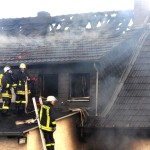Safety Tips For Halloween 2019
While Halloween is a family-friendly holiday, it can also be a very dangerous night. With more pedestrians on the road and people concealing their identities with costumes, the risks are higher. Before partaking in the Halloween fun, review these Halloween safety tips.
Pick A Safe Costume
- Costumes, wigs, and accessories should be made with fire-resistant materials.
- Avoid masks that may obstruct your child’s live of vision.
- If your kids will be out after dark, or their costumes are hard to see at night, use bright, reflective material or adhere reflective tape to your child’s costume to increase visibility.
- If you are using makeup, be sure that is it nontoxic and that it is removed before bed to avoid irritation.
Know Where They Are
- Kids 12 and under should be chaperoned.
- If you are not chaperoning, be sure you know who your children are going out with, where they will be going, and that you have the contact information of the adult chaperone.
- If your children are older, be sure that they trick-or-treat in a group with friends and that they stick to familiar, well-lit routes.
- If your child has a cell phone, you can set up a GPS tracker together so that you know where they are.
Be Aware Of Surroundings
- Road safety is especially important on Halloween night as more kids are walking around, usually excited and distracted, and drivers may not be paying attention, or even worse, driving home after a night of celebrating. Here are some important reminders:
- You and your children should only cross the street at corners where there are traffic lights and crosswalks.
- Always check left, right, and left again before crossing.
- For both kids and adults, make sure heads are up and alert, not looking at phones or electronic devices.
- Walk, don’t run, when crossing the street. If you can’t make it across the street in time, wait for the next green light.
Pumpkin Safety
- Small children should not carve pumpkins. Instead, have them use a marker to draw a face and an adult may carve it for them once they are done. Or they can simply decorate the pumpkin with markers, paint, etc.
- Consider using a flashlight or glow stick to illuminate your jack-o-lantern. If you opt for a candle, votive candles are the safest choice.
- Pumpkins should be securely places on table tabletops and away from flammable objects and should not be left unattended.
Candy Safety
- Feed your children a good meal before heading out for trick-or-treating so that they are less tempted by the treats when they’re out.
- Although tampering is rare, it is important to inspect and sort candy with your children when you get home. Discard old, spoiled, or unwrapped treats.
- If you child has allergies, be mindful of the houses you visit and inspect candy labels carefully. If you are unsure, err on the side of caution and toss it.
Share your own Halloween safety tips with your peers and us at Facebook, Twitter, LinkedIn, and Pinterest. Visit SecurityCamExpert.com to shop our selection of quality surveillance cameras and equipment or call 888-203-6294 to request a FREE quote!
Prevent Home Accidents
When it comes to home safety, it is easy to overlook some potential hazards which can cause serious and sometimes fatal accidents. Luckily, some of these can be prevented with simple and relatively cost-effective measures. Take action and prevent these mishaps with these tips.
Alarms
With the surprising number of deaths resulting from fires in homes/buildings with absent or non-functioning smoke alarms (an average of 1450 deaths from 2009-2013), please make sure that you have working smoke alarms on every level of your home (including the attic and the basement).
To ensure that all fires are detected, invest in one which utilizes both a photoelectric sensor for smoldering fires, and an ionization sensor for fast-flaming fires. Those alarms with an ionization sensor should be kept away from the kitchen and baths. Also, invest in interconnected alarms so that if a fire starts in one area of your home, the entire home is alerted.
If your house has a gas dryer, range, other fuel burning equipment, or an attached garage, it is advised to install a carbon monoxide (CO) alarm. These should be present on each living level, as well as in the basement and near the garage (follow manufacturer’s instructions on placement).
Test your alarms at least monthly, and vacuum them to prevent dust from interfering with their sensors every so often. Follow the guidelines on when to replace batteries and the devices themselves based on life expectancy of sensors.
Trips & Falls
Did you know that every year, more than 10,000 people die after falling at home? Even more sustain injuries. We all can be a little clumsy sometimes, but there are ways to prevent these types of accidents in your home.
Make sure that your furniture is arranged in a way that does not disrupt your typical routine (ex. a clear path between your bed and your bedroom door). Keep any pet bowls and electrical cords along the walls rather than across any pathways. Avoid storing piles of paper on the ground, and eliminate any throw rugs as they may skid. If you decide to keep the throw rug, use carpet tacks or double-sided carpet tape to keep it in place. In the bath tub, consider installing a rubber mat or non slip strips and grab bars. Lastly, if you’re remodeling, you may want to choose anti-slip flooring material whenever possible.
Burns
According to the National Safety Council, an estimated 486,000 people were treated for burn injuries (many were children) in the United States in 2011. While lowering the maximum temperature on your water heater to 120°F can help prevent scalds, it also provides an ideal environment for opportunistic bacteria to breed.
Instead, set domestic water heaters to 140°F and employ anti-scald devices at each faucet. For example, thermostatic mixing valves mix hot and cold water to a safe temperature before sending through the faucet. These have become increasingly common in new homes and are often built in to newer fixtures. A licensed plumber can examine your system and install them as needed, or you can save money by installing a single anti-scald valve for your entire house.
Do you have any other home safety tips to share? Connect with us on Facebook, Google+, Twitter, LinkedIn, and Pinterest.
Secure your home with our quality security camera systems today! Browse online at SecurityCamExpert.com or call 888-203-6294 to schedule a site survey or learn more about our products and installation services.

